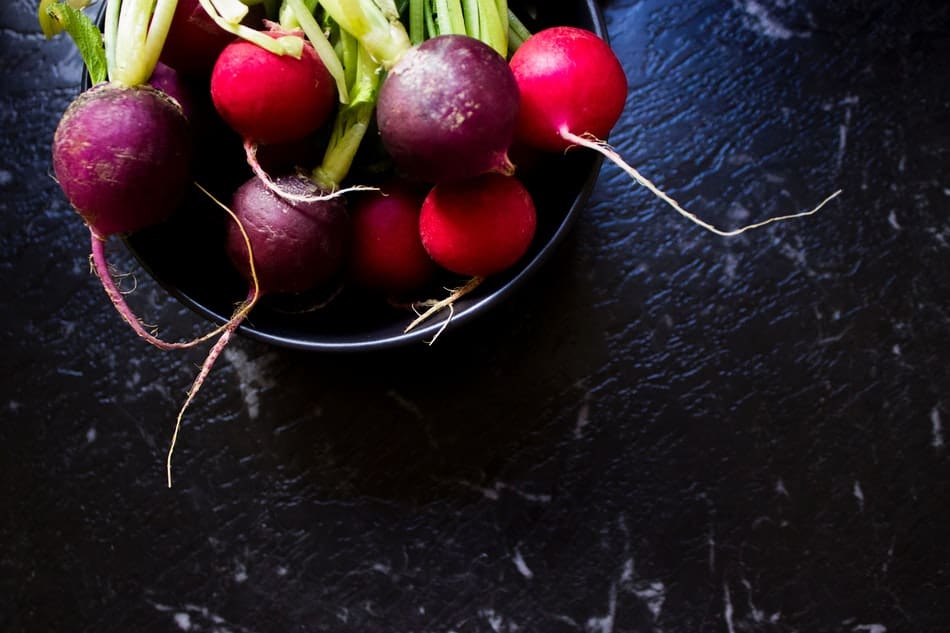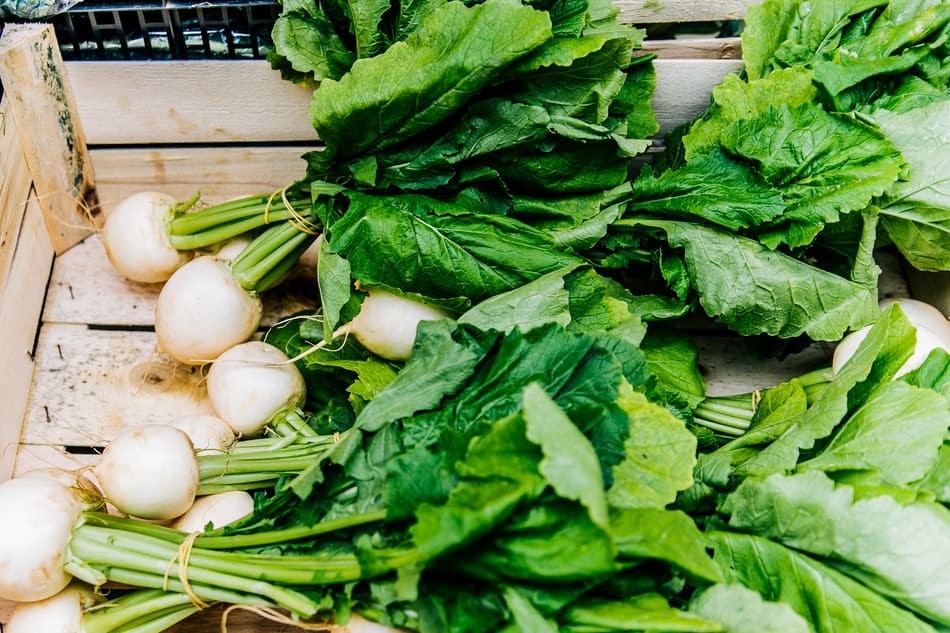Do you want to know how to grow radish microgreens? They are a great way to add color and flavor to your meals, and they are very easy to grow. In this article, I will discuss the basics of growing radish microgreens. I will cover everything from choosing a location to harvesting your crops. So, whether you are a beginner or an experienced gardener, this blog post has something for you!
To get started, gather your supplies gathered, fill your container with potting mix or soil and moisten it with water. Then, sow your radish seeds thinly on the surface of the soil and cover.
Choosing A Location For Planting Radish Microgreens
Once you have everything you need, it’s time to start planting your radish microgreens! But where should you plant them?
- The first thing to consider is whether you want to grow your microgreens indoors or outdoors. If you live in an area with harsh winters, then growing microgreens indoors might be the best option for you.
- Another factor to consider is how much sunlight your plants will need. Radish microgreens only need about four hours of sunlight per day, so they can be grown in a shady spot outdoors or near a window indoors.
- Finally, make sure that the location you choose has good drainage. Microgreens will not do well if they are sitting in water, so avoid any areas that tend to flood or have standing water.
Once you’ve chosen the perfect location for your radish micro greens, it’s time to get planting!

How To Grow Radish Microgreens
To grow radish microgreens, you’ll need some basic supplies. You’ll need a shallow container like a tray or an egg carton, some potting mix or soil, and some radish seeds. You’ll also need a source of water. A spray bottle works well for watering microgreens.
To get started, fill your container with potting mix or soil and wet it down with your spray bottle. Then, sprinkle a thin layer of radish seeds over the surface of the soil. Make sure the seeds are evenly spaced out so they have room to grow.
Once you’ve sprinkled on the seeds, mist them lightly with water from your spray bottle and cover the container with plastic wrap or a lid. This will help keep the soil moist and the seeds warm so they can germinate.
Set your container in a warm, sunny spot and check on it daily. After a few days, you should see the radish seeds sprouting up. Once they’ve sprouted, remove the plastic wrap or lid and continue to mist them with water from your spray bottle every day.
How To Fertilize Radish Microgreens
There are a few things to consider when fertilizing radish microgreens. The first is the type of fertilizer you use. Radish microgreens do best with a water-soluble fertilizer that has a low nitrogen content. A good rule of thumb is to use one-quarter of the recommended amount of fertilizer on the package.
The second thing to consider is how often you fertilize. Radish microgreens should be fertilized every two weeks or so. If you fertilize too often, you run the risk of overfeeding them and causing them to become leggy and produce fewer leaves.
Finally, make sure you water your radish microgreens well before and after applying fertilizer. This will help prevent root burn and help the fertilizer reach the roots where it can do the most good.

How To Harvest Microgreens
There are three main steps to harvesting microgreens:
First, you will need to cut the plants just above the soil line using a sharp knife or scissors. Be sure to cut as close to the soil as possible so that you don’t damage the roots.
Second, you will need to remove any excess dirt or debris from the plants. You can do this by gently shaking them or by rinsing them with water.
Third, you will need to dry the plants before storing them. You can do this by placing them on a paper towel or by hanging them upside down. Once you have harvested your microgreens, they should be stored in an airtight container in the refrigerator and used within a week.
Harvesting microgreens is a simple process that anyone can do. By following these three steps, you will be able to enjoy fresh, nutrient-rich greens all year long! Thanks for reading and happy harvesting!
Now that you know how to harvest microgreens, give it a try! You may find that you enjoy the process and the results. Who knows, you may even start your own microgreen business!
How Long Do Microgreens Take To Grow?
This is a question we get asked a lot, and the answer may surprise you. Microgreens can be grown in as little as one week! Of course, this all depends on the type of microgreen you’re growing and the conditions you’re growing them in. For example, if you’re growing in a warm climate with plenty of sunlight, your microgreens will likely grow faster than if you’re growing in a cooler climate with less sunlight.
So, if you’re looking to get started with microgreens and don’t want to wait too long to see results, fear not! You can have fresh microgreens to enjoy in just a few short weeks.
Can Radish Microgreens Regrow After Cutting?
The short answer is yes, radish microgreens can regrow after cutting. If you want to harvest your radish microgreens again, simply cut them back to about an inch above the soil line and they will regrow within a week or two. You can expect the second harvest of radish microgreens in about three to four weeks.
If you are growing radish microgreens for the first time, it is best to start with just a small amount of seed. This way, if you are not happy with the results, you have not wasted a lot of seed. Radish microgreens are relatively easy to grow and do not require much space or special equipment. All you need is a shallow container, some potting mix, and a sunny windowsill.
Final Words
Radish microgreens are a great way to add some flavor and nutrition to your meals. They’re easy to grow, and they don’t take up much space. You can grow them indoors or outdoors, and you don’t need a lot of equipment. All you need is a container, some soil, and some radish seeds.
If you’re looking for a fun and easy gardening project, give radish microgreens a try. You’ll be rewarded with nutritious greens that taste great, and you’ll have the satisfaction of knowing that you grew them yourself!
Related Articles

